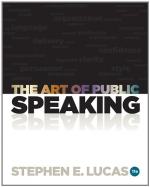There is a modern English picture which the genius of Hawthorne might have inspired. The painter calls it, “How they met themselves.” A man and a woman, haggard and weary, wandering lost in a somber wood, suddenly meet the shadowy figures of a youth and a maid. Some mysterious fascination fixes the gaze and stills the hearts of the wanderers, and their amazement deepens into awe as they gradually recognize themselves as once they were; the soft bloom of youth upon their rounded cheeks, the dewy light of hope in their trusting eyes, exulting confidence in their springing step, themselves blithe and radiant with the glory of the dawn. Today, and here, we meet ourselves. Not to these familiar scenes alone—yonder college-green with its reverend traditions; the halcyon cove of the Seekonk, upon which the memory of Roger Williams broods like a bird of calm; the historic bay, beating forever with the muffled oars of Barton and of Abraham Whipple; here, the humming city of the living; there, the peaceful city of the dead;—not to these only or chiefly do we return, but to ourselves as we once were. It is not the smiling freshmen of the year, it is your own beardless and unwrinkled faces, that are looking from the windows of University Hall and of Hope College. Under the trees upon the hill it is yourselves whom you see walking, full of hopes and dreams, glowing with conscious power, and “nourishing a youth sublime;” and in this familiar temple, which surely has never echoed with eloquence so fervid and inspiring as that of your commencement orations, it is not yonder youths in the galleries who, as they fondly believe, are whispering to yonder maids; it is your younger selves who, in the days that are no more, are murmuring to the fairest mothers and grandmothers of those maids.
Happy the worn and weary man and woman in the picture could they have felt their older eyes still glistening with that earlier light, and their hearts yet beating with undiminished sympathy and aspiration. Happy we, brethren, whatever may have been achieved, whatever left undone, if, returning to the home of our earlier years, we bring with us the illimitable hope, the unchilled resolution, the inextinguishable faith of youth.
—GEORGE WILLIAM CURTIS.
QUESTIONS AND EXERCISES
1. Clip from any source ten anecdotes and state what truths they may be used to illustrate.
2. Deliver five of these in your own language, without making any application.
3. From the ten, deliver one so as to make the application before telling the anecdote.
4. Deliver another so as to split the application.
5. Deliver another so as to make the application after the narration.
6. Deliver another in such a way as to make a specific application needless.
7. Give three ways of introducing an anecdote, by saying where you heard it, etc.




